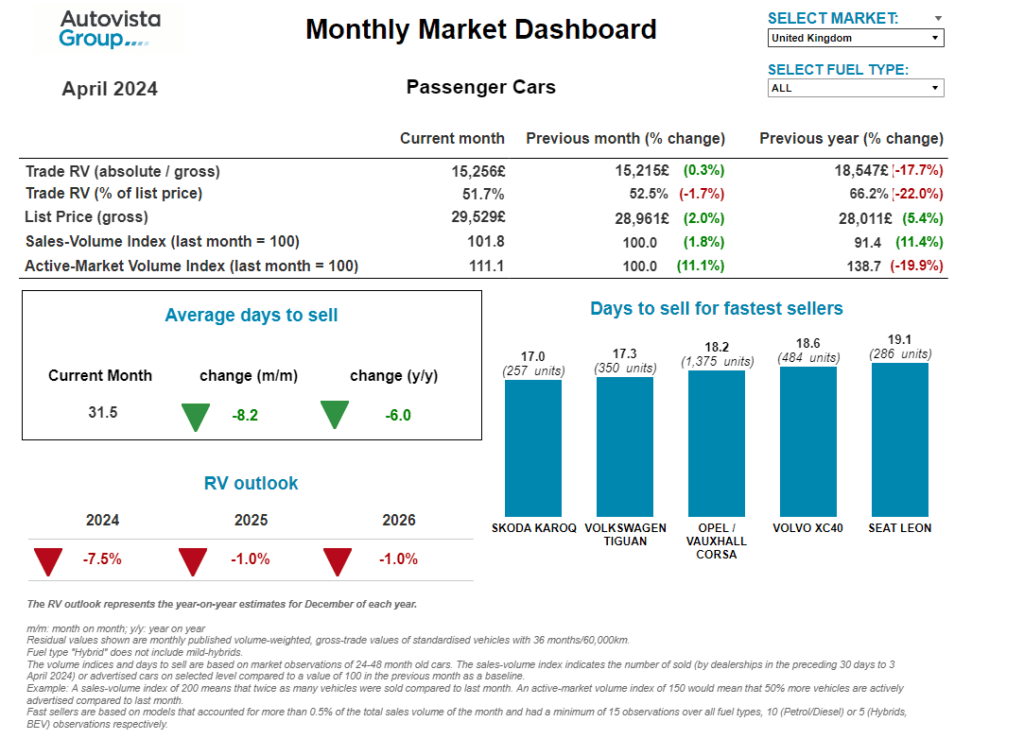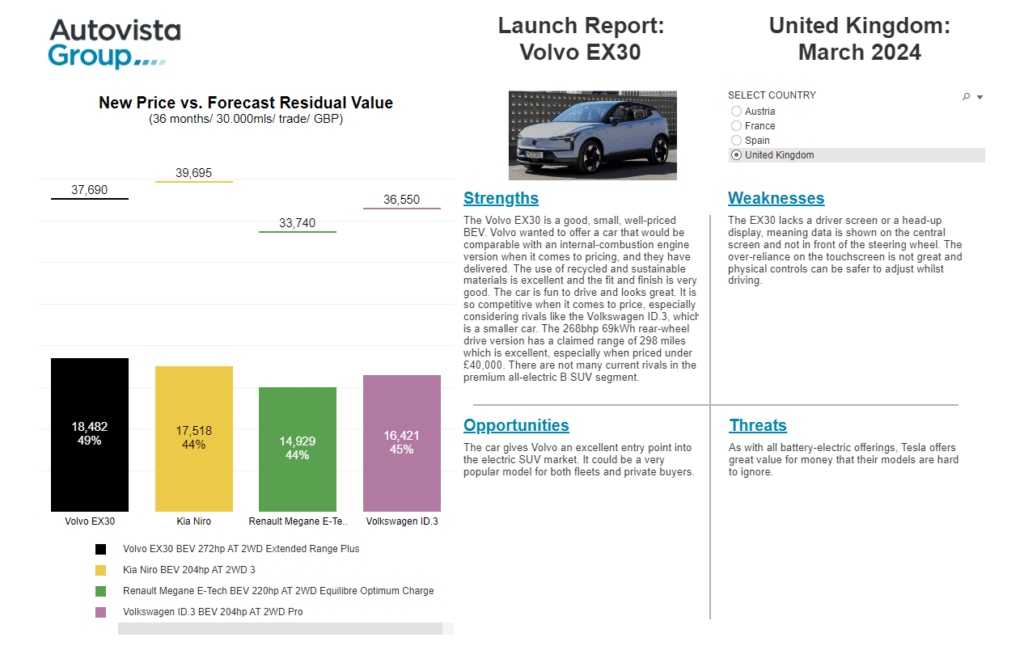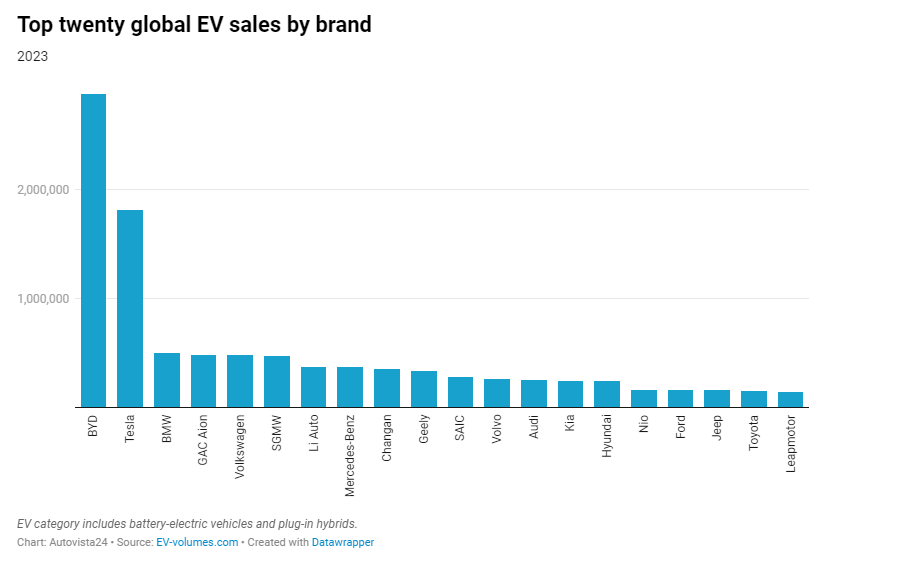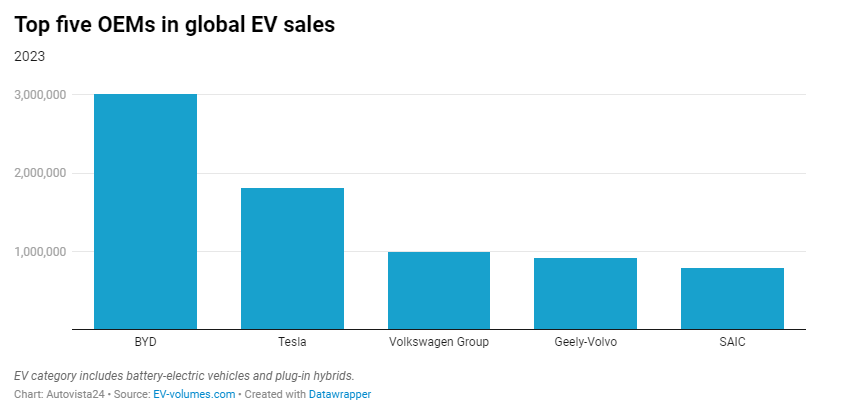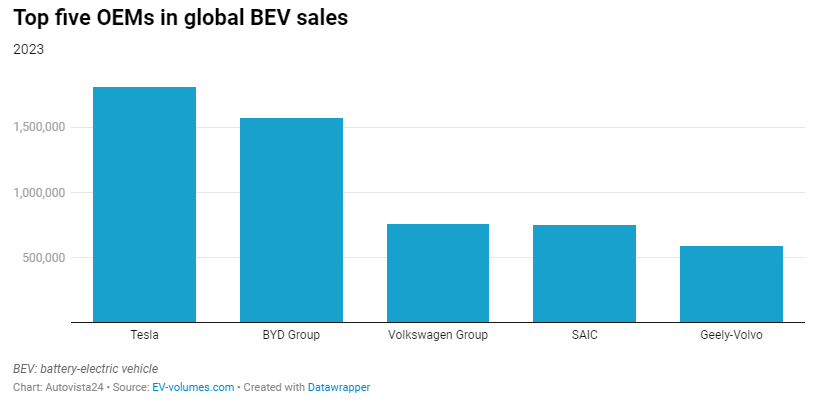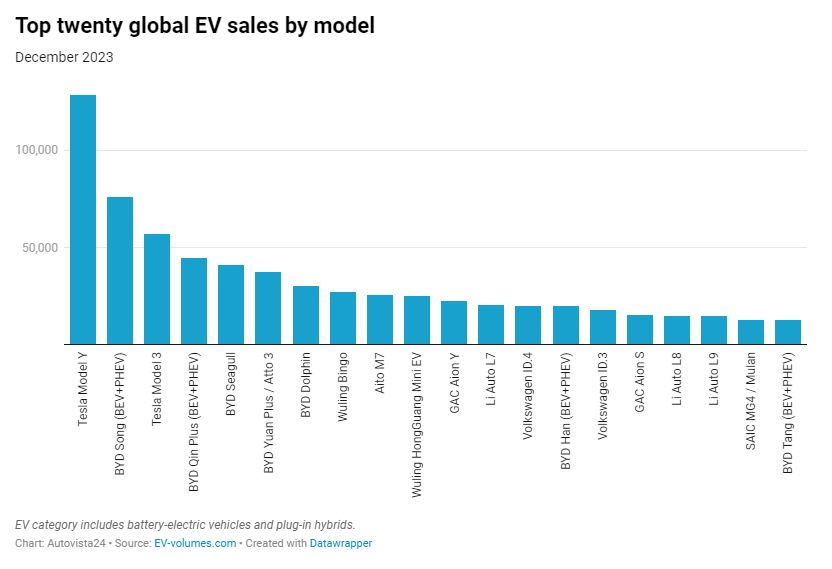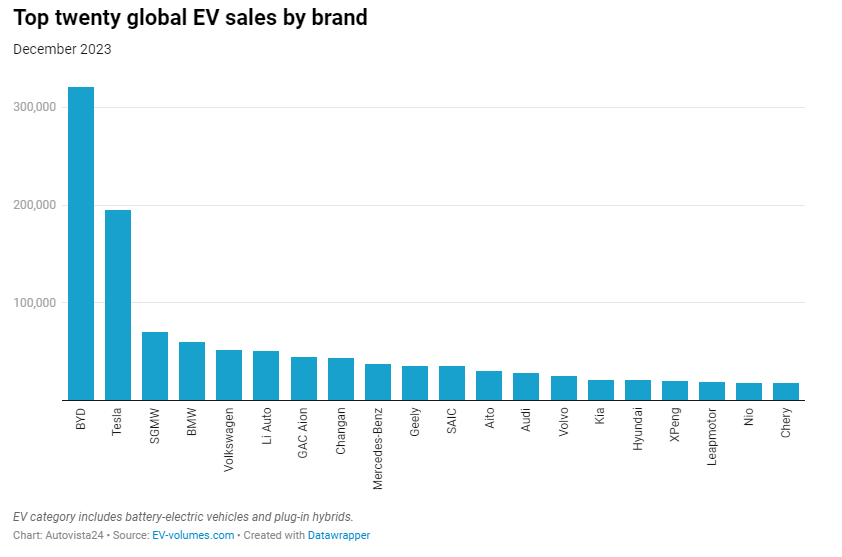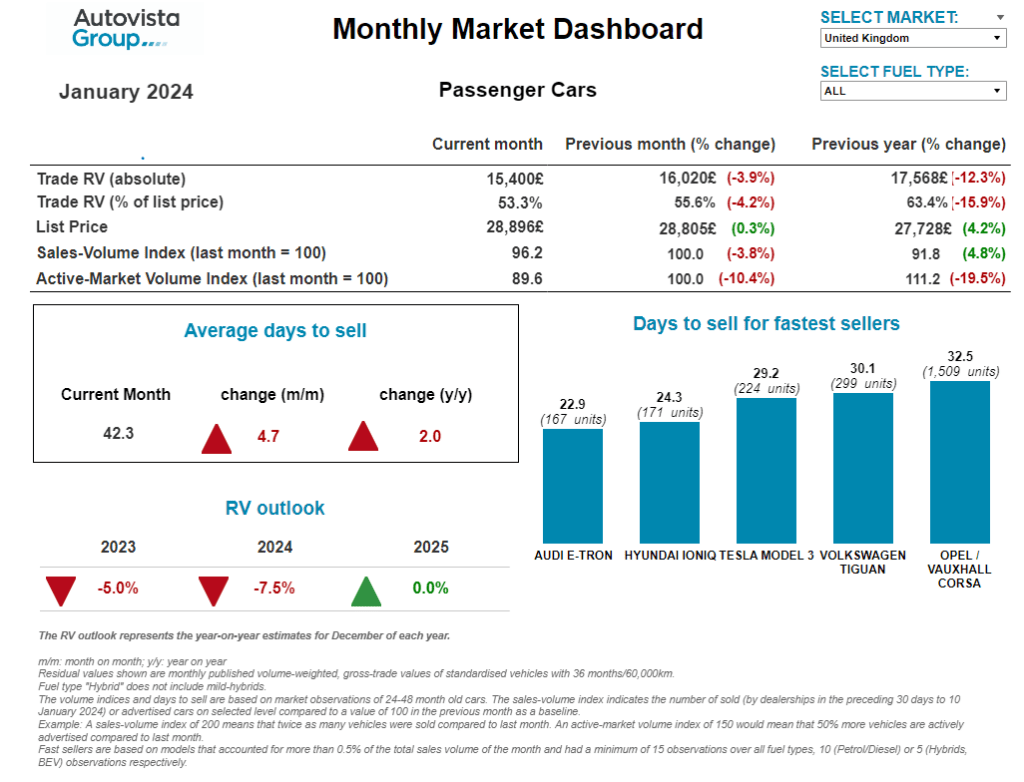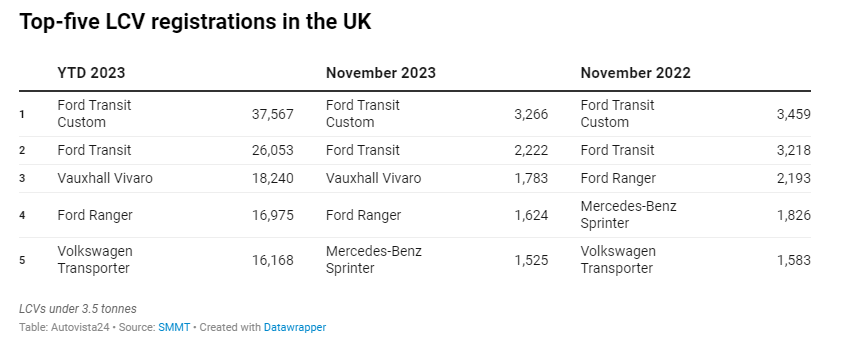Following 17 consecutive months of growth, registrations of new light-commercial vehicles (LCVs) in the UK fell in June. Andy Picton, chief commercial vehicle editor at Glass’s (part of J.D. Power) analyses the figures with Autovista24 special content editor Phil Curry.
A total of 33,066 new LCVs were delivered in the UK last month, down 4.5% year on year. This comparative decline was the result of some impressive figures recorded in June 2023.
At 2024’s halfway point, a total of 177,620 LCV registrations were recorded, the highest first six-month total since 2021. This equated to a growth of 4.5% compared to the same period in 2023.
Continued declines
June’s decline was caused by varying demand across the different LCV markets. Registrations of pickups dropped 18.1% in the UK.
Deliveries of vans between 2.5 and 3.5 tonnes gross-vehicle weight (GVW) fell 8.2%. However, this sector still represented 65.6% of all LCV registrations, with 21,667 units. Yet it was the second month in a row that this key market recorded a decline in deliveries.
Vans below 2 tonnes GVW recorded a 58.7% increase in registrations with 806 units. Meanwhile, vans between 2 and 2.5 tonnes GVW rose by 14%, with 7,169 deliveries.
Transit leads
Once again, Ford recorded a strong month, taking the top two spots in June’s LCV best-seller table. The Transit Custom claimed top spot with 4,954 deliveries, while the Transit took second place with 2,730 units.
Rounding out the top three was the Mercedes-Benz Sprinter, reaching 1,911 registrations. Then came the Renault Trafic, recording 1,888 registrations.
The Stellantis trinity of Peugeot Partner, Vauxhall Combo (1,580 units) and Vauxhall Vivaro (1,450 units) finished in fifth, seventh and eighth places respectively. They were separated by the Ford Ranger in sixth with 1,686 deliveries. Elsewhere, the Volkswagen (VW) Transporter claimed ninth place registering 1,274 units.
BEV struggle continues
Registrations of LCV battery-electric vehicles (BEVs) fell for the third month this year, dropping by 16.8% compared to June 2023. A total of 1,476 all-electric units were registered in the month. The powertrain accounted for 4.5% of deliveries, down 0.6 percentage points (pp) on the same month last year.
Ford, Maxus and Mercedes-Benz registered an additional 48 BEVs above 3.5 tonnes GVW during the month. This puts June’s overall BEV registration total at 1,524 units.
At the halfway point of 2024, a total of 8,353 all-electric units have been registered, down 5.1% year on year.
The BEV market is also bracing itself for future challenges, which could impact registrations in the coming years. The Mayor of London recently confirmed that the Congestion Charge Exemption for BEVs in the city is to be removed from 25 December 2025.
Planned since 2018, the move ends the exemption for both electric passenger cars and commercial-vehicle models. However, challenges are likely, with suggestions for electric-LCV exemptions to continue, as these vehicles cannot avoid the zone.
In the first half of 2024, all-electric LCVs made up 4.7% of the overall market, down 0.5pp on 12 months ago. This is well below the 10% target set in the UK’s zero-emission vehicle mandate.
While LCV manufacturers continue to produce improved zero-emission vehicles, the run-up to the UK General Election has seen sales stall. In addition, caution and uncertainty are creeping into an already struggling sector.
Vauxhall takes charge
Vauxhall registered 424 BEVs in June, taking a 27.8% share of the EV market. This was a significant distance ahead of Mercedes-Benz in second (160 units and 10.5% market share). Peugeot was third with 146 units (9.6% share), fourth was Ford with 144 units (9.5% share) and fifth was Renault with 140 units (9.2% share).
The Vauxhall Vivaro Electric was the best-selling electric van in June, with 299 deliveries. In second, Renault registered 140 Kangoo E-Tech vans, with the Vauxhall Combo Electric in third with 125 units. The VW ID. Buzz Cargo van placed fourth with 123 new deliveries, whilst fifth was the Ford E-Transit with 117 registrations.
In the year to date, only BYD (100%), Maxus (12.2%), Peugeot (11.8%) and Nissan (10.9%) are currently meeting the minimum 10% zero-emission vehicle (ZEV) mandate sales share target for 2024. Vauxhall’s BEV vans took 8.3% of their LCV sales, and are moving in the right direction alongside the closely grouped VW (6.4%), Toyota (6.3%) and Renault (6%).
With a new UK government now in place, priority must be given to re-energising demand with a sensibly-priced van-specific charging network supported by economic incentives for electric-van growth. At the same time, provisions should be made available to support hydrogen development in larger LCVs and trucks. Only then can the industry make a full and necessary zero-emission transition.
Subdued desire in UK
A seemingly endless supply of used stock is entering auction houses, most of which are ex-fleet, low-spec vans with varying degrees of paint and bodywork damage. As a result, the desire for this quality of stock is subdued, with prices softening as buyers bid more cautiously.
However, ready-to-retail high-spec stock is bucking this trend, especially models with a good service history and under 60,000 miles (96,560km) on the clock. Higher mileage or damaged stock is seen to take longer to prepare for sale. Therefore, these models are not considered as attractive, meaning conversion rates have dipped.
June saw lower overall sales volumes, with figures ending the month down 9.5% on May, and falling by 8.2% compared to 12 months ago.
Euro 6 vehicles made up 80% of all vehicles sold at auction at an average age of 54.7 months. The average mileage stood at 73,708 miles, while the average selling price remained static at £9,022 (€10,711). This was only down by a marginal £3 on May.
A complete lack of enthusiasm for used electric vans saw sales halve to only 0.64% of the overall market. This was down from 1.2% in the previous month. The average age of these vehicles was 85 months, up by 19.3 months.
Meanwhile, average mileage increased by over 13,000 miles to 43,575 miles. The average selling price of these models was down by over £325 compared to May, at nearly £5,050. Euro 5 stock made up the remaining 19.3% of sales, down from 19.6% in the previous period.
Older on average
The average age of sold stock increased to 74 months in June, from 73 months in May. Yet this is 7.9 months younger on average than ages reported in the same period last year.
Average mileage over the month increased by nearly 1.3% to reach 80,576 miles, but this is 2.8% lower than in June 2023. Overall average sale prices fell by just 0.1% during June. This figure is a 5.6% decline since the end of 2023 and a decrease of nearly 14% in the last 12 months.
Medium vans continue to be the most popular vehicle type at auction, accounting for 32.7% of all auction sales in June. Small vans accounted for 28.2% of sales, and large vans took 25.3%.
Volumes of sold 4x4 stock accounted for only 13.8% of all sales, but this was up 2.3%. These vehicles also attracted the strongest average sale price of £12,831, down by £19 when compared to May 2024.
Large vans covered more distance than any other vehicle type at an average of 90,027 miles. This was up over 6,225 miles on the previous month and over 4,200 miles on 12 months ago.
Improving UK van conversions
First-time conversion rates improved by 2.7pp in June, reaching 69.4% overall, yet these figures fell by 2.3pp compared to the same point last year.
The best conversion rates were achieved in the small van sector at 74.6%, up from 72.4% in May. Large vans recorded the lowest conversion rate at 64.6%, down 1.1pp compared to May.
Used vehicles observed for sale in the retail market last month increased by nearly 1% to just under 46,000 units. Of these, 94.4% were diesel models, 1.8% were petrol, 0.4% were plug-in hybrids (PHEVs) and 3.3% were BEVs.
Of all vehicles on sale, 40.2% were valued at £20,000 or more, while 38% were on sale for between £20,000 and £10,000. At the lower end of the market, those vehicles on sale in the £10,000 to £5,000 price bracket made up 17.4% of the overall market, while 4.4% were on sale for less than £5,000. The average age of all vehicles remained steady, falling by only one month from 56 months to 55. The average mileage also fell by 1.5% over the month to just over 58,350 miles.
This content is brought to you by Autovista24.



 Close
Close